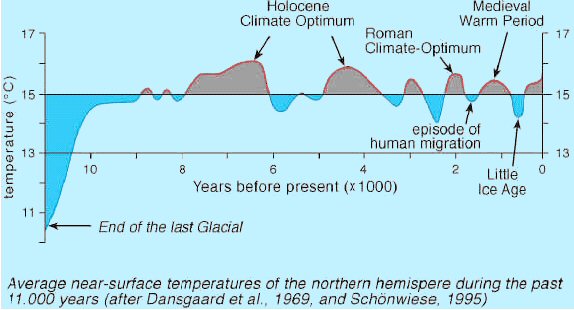In order to follow the global warming debate, we get to learn about new things. Tree rings, and why they are thick or thin. History, such as the Medieval Warming Period or the Little Ice Age. This has become important, as the global warming alarmists want us to believe that it has never been hotter than now. So they constructed a chart based on the thickness of tree rings to show just that. (Never mind that the creator of the tree ring dataset said 'Don't use this as a proxy for temperatures.') During the analysis of the data, two very well documented historical periods--the Medieval Warming Period and the Little Ice Age, were sort of written out of the record books. When this was pointed out to the alarmists, a lot of tap dancing began.

First, they said the MWP never happened. Then they said it was a strictly local phenomenon. I don't know what they're saying now. For a good read on this, check out
CO2 Science.
We also learn about people. James Hansen is a scientist who believes that global warming is potentially (well, in his opinion almost certainly) catastrophic. He travels the world (by, er, jet) telling anyone who will listen that CO2 is causing the melting of Arctic ice, the breaking of Antarctic ice shelves, and a lot more.
He has been so jazzed up about global warming that he wrote in a scientific paper in 2003 that, “Emphasis on extreme scenarios may have appropriate at one time, when the public and decision-makers were relatively unaware of the global warming issue.” (James Hansen, Nature, 2003). Which reminds me of what another global warming alarmist, Stephen Schneider, once said in this regard. "To capture the public imagination, we have to offer up some scary scenarios, make simplified dramatic statements and little mention of any doubts one might have. Each of us has to decide the right balance between being effective, and being honest." (Discover magazine, October 1989).
Back to James Hansen. He testified in 1988 before Congress that global warming is a huge threat to us all. He brought along some charts that showed what he predicted would happen to temperatures. A weblog named Climate Skeptic overlaid his most pessimistic prediction with what has actually happened to temperatures. I'll leave you for now with this chart. These examples are what started me thinking skeptically.
Comments